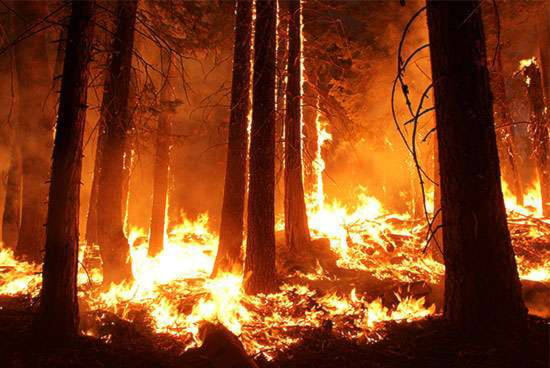Expect to see more smoke around the valley if the City of Kelowna enacts 47 recommendations to update Community Wildfire Protection Plan.
The recommendations include better communication and education, stringent enforcement of existing bylaws, better land-use planning, looking more closely at where development is allowed, talking to developers, mandating a 10-metre minimum setback for buildings from interface areas and ensuring land the city receives has had fire hazards removed.
The most controversial measure of all, however, is allowing regular prescribed burning as a tool to reduce grasslands that could act as fuel in the event of fire.
“Grass is like gasoline for fire,” said consultant Bruce Blackwell during a Monday council meeting, adding that some in the community will not be happy with such a move, especially if they live near a burn and are concerned about the smoke.
But he said the inconvenience of a few hours of smoke is far preferable to weeks of smoke and the possibility of property loss from wildfire.
The update to the plan was ordered by the city in response to the recommendation of the Firestorm 2003 Provincial Review.
In 2003, Kelowna saw more than 240 homes burned to the ground when the Okanagan Mountain Park Wildfire roared through the southern part of the Mission. That fire also destroyed several of the famous wooden Kettle Valley Railroad trestles in Myra Canyon.
It was not the only devastating wildfire in B.C. that year.
The provincial review was aimed at helping communities develop plans to assist in improving safety and reducing the risk of damage to property in future. Some of its recommendations are included in the Kelowna plan, said Blackwell.
The new Kelowna plan says the risk to the city from wildfire is significant but there are actions that can be taken to reduce that risk.
Since 2003, the entire Central Okanagan areas has experienced other wildfires that, while not as extensive as the Okanagan Mountain Park fire, have caused serious damage.
Reducing the risk of fire here will be a complex challenge, says the plan. And it will require a wide range of initiatives, leadership in fuel management and room for additional work.
But, as was pointed out Monday, the city has already taken action on a number of fronts including reducing and mitigating the threat on 600 hectares of city-owned land, implementing FireSmart initiatives, improving its emergency response efforts and through planning and development.
Blackwell said the biggest challenge will be reducing the threat on private land because land owners will have to make the changes. And pushing them to do so could be unpopular.
One of the ways to help reduce fire on private developed land would be to require “low-flammability” plantings in landscaping and fire-resistant building materials on new houses.
To report a typo, email:
newstips@kelownacapnews.com.
@KelownaCapNews
newstips@kelownacapnews.com
Like us on Facebook and follow us on Twitter.
